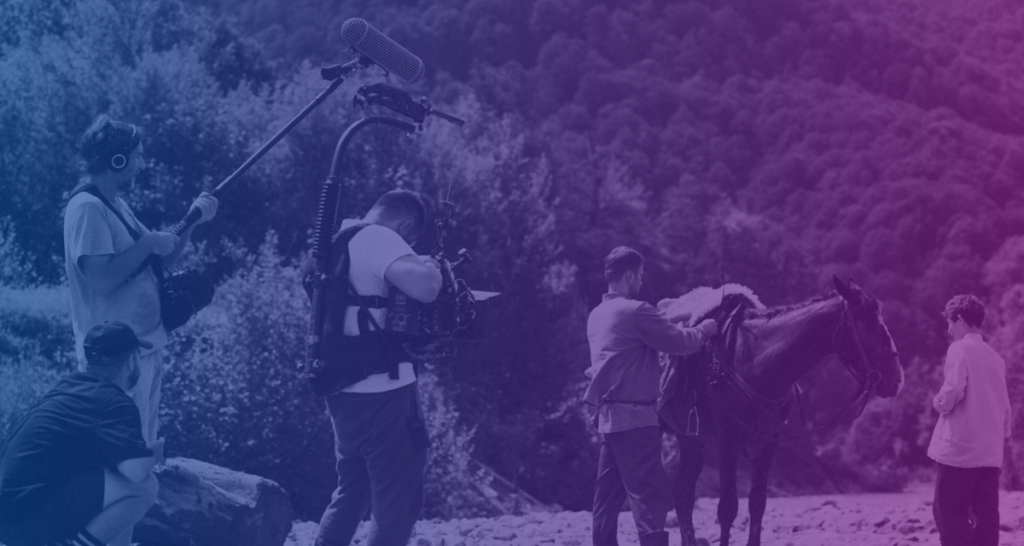
Completing a film is a huge accomplishment, but it’s hardly the final step of your production journey. No filmmaker wants to make a movie that no one sees. These days, one of the most effective tools in an independent filmmaker’s arsenal is social media.
With the strategic utilization of social media to amplify your film’s reach and engage with your audience effectively, you can carve a niche in the competitive entertainment landscape.
But how? And where should you begin? Independent films require tailored social media strategies to stand out. Fortunately, there are several proven strategies that can help to get the job done.

How do you establish a social media presence for your film?
To start, carefully select the platforms where your target audience is most active, such as TikTok, Facebook, Instagram, Twitter, and YouTube. Explore niche platforms or forums tailored to your film’s genre or subject matter.
Craft compelling profiles that accurately reflect your film’s essence and resonate with your audience. Utilize high-quality images, captivating cover photos, and succinct yet informative bio sections. Maintain consistency in branding across all platforms, employing the same logos, colors, and messaging to enhance brand recognition. Integrate visual elements from the film, like posters or stills, into your profile designs for added impact.
Optimize your profiles for increased visibility and engagement by incorporating relevant keywords, researching popular hashtags, and including links to your film’s website or trailer. These actions can help build an expanded, robust audience.
How should you promote a movie on social media?
There are many ways to get your project out there, but to be as effective with your promotion as possible, employ a multifaceted approach that includes hashtag and suggested content campaigns, contests, giveaways, screenings, and paid advertising.
Create a branded hashtag to organize user-generated content and develop suggested content themes to encourage engagement. Host contests, giveaways, and screenings to generate excitement and incentivize participation from your audience.
Utilize paid advertising to amplify your reach, targeting specific demographics, interests, and behaviors. Experiment with different ad formats and closely monitor campaign performance to optimize results.
By leveraging these strategies, you can effectively promote your movie on social media and engage with a broader audience.
How do you create a social media strategy for your film?
To ensure that your strategy is effective, begin by defining clear objectives that align with your goals, whether it’s raising awareness, boosting engagement, driving ticket sales, or fostering community.
Understand your audience demographics, interests, and preferences to tailor your content accordingly. Plan content themes that reflect the essence of your film and establish a posting schedule to maintain consistency.
Utilize various media types such as video trailers, still images, written captions, and audio snippets to diversify your content. Implement engaging updates, behind-the-scenes glimpses, teasers, and talent profiles to captivate your audience.
Foster audience engagement through interactive content like polls, Q&A sessions, and user-generated content, encouraging participation and building a sense of community. Actively respond to feedback to nurture relationships and demonstrate a commitment to audience satisfaction and improvement.
How do you approach influencer collaborations for your film?
Who are the influencers who genuinely connect with the themes, genre, or target audience of your project? Start there. Look for those with significant followings and engagement rates on platforms where your audience is most active, and research their past collaborations to ensure alignment with your film’s values and aesthetic.
Explore partnership opportunities such as sponsored posts featuring reviews or behind-the-scenes content, giveaways to increase brand visibility, and exclusive access to engage their audience. Prioritize authentic endorsements from influencers whose values align with your film, focusing on genuine connections rather than solely follower counts.
Collaborate with influencers willing to create content that resonates with your film’s tone and messaging, ensuring authenticity in promoting your project. A few well-placed partnerships can help your project engage with a much broader audience.
Case Study: Tangerine (2015)
As an independent success story, Sean Baker’s 2015 film Tangerine exemplifies the masterful integration of innovative marketing strategies to propel a small feature to widespread acclaim and recognition. Most famously, the entire feature was shot on an iPhone, a groundbreaking production method, which helped the film’s marketing team stimulate a conversation around the future of indie production in the media.
Using social media like Instagram and Twitter as primary tools for engagement, Baker and his team teased behind-the-scenes footage and regular updates to build an intimate connection with audiences—one based on transparency. In a brilliant move, they incorporated the movie’s cast of fresh-faced newcomers and industry vets into promotional efforts, encouraging them to share experiences and interact with fans.
By strategically targeting LGBTQ+ communities through advocacy groups and influencers, the film managed to resonate quite deeply, creating more conversation around the state of representation in cinema. Fate also had a role, such as in the viral moments caused by star Mya Taylor’s impassioned advocacy. The filmmakers further fostered a vibrant community around Tangerine based on participation by embracing user-generated content, which helped push the movie into the zeitgeist.
And after its premiere at the Sundance Film Festival, Tangerine leveraged its buzz and critical acclaim on social media to amplify excitement among industry insiders and potential distributors, ultimately cementing its place as a groundbreaking indie success story.
The power of an audience on social media
Leveraging social media effectively can mean the difference between obscurity and success. In this entertainment era, your film will have its best chance of reaching an audience if you factor these elements into your planning.
While every project or filmmaker is different, the process of carefully curating one’s social media presence is universally beneficial. Like traditional film marketing, it’s still about tailoring your strategy to best locate and develop your target audience. In the end, social media is one of the most powerful tools independent filmmakers have to bring their stories to the world and connect with audiences in meaningful ways.
